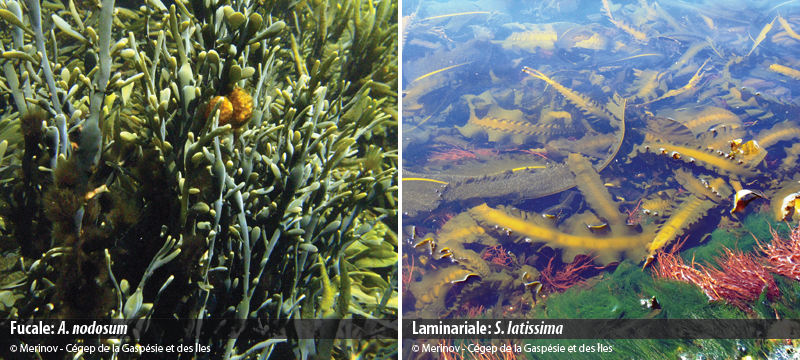Algae – Species
Laminariales and fucales are the two groups of brown seaweed that form biomasses that are dense enough to justify commercial harvesting activities. Moreover, they are the main seaweeds harvested at present by enterprises and it is precisely for these seaweeds that a catalogue and maps showing distribution and abundance are most often demanded. A number of Fucales and Laminariales have therefore been pre-selected (Table 1) and the historical and recent data pertaining to these species were entered first to form the heart of the data base.
Table 1. List of targeted species with their common and Latin names.
| Group | Species | Scientific name |
|---|---|---|
| Fucales | Knotted wrack | Ascophyllum nodosum |
| Common Rockweed | Fucus distichus evanescens | |
| Common Rockweed | Fucus distichus edentatus | |
| Bladderwrack | Fucus vesiculosus | |
| Laminariales | Wing Kelp, Dabberlocks | Alaria esculenta |
| Horsetail Kelp, Oarweed, Tangle | Laminaria digitata | |
| Sugar Kelp, sweet kombu | Saccharina latissima | |
| Sugar Kelp, sweet kombu | Saccharina longicruris |

Now that this has been done, information on a larger variety of species could be incorporated; examples include Sea Lettuce (Ulva/Ulvaria spp.), red seaweed such as Dulse (Palmaria palmata) and lavers (Porphyra spp.), which are less common and have smaller biomasses but which are nevertheless of interest for the manufacture of high value-added products. It will also be interesting to later add floristic lists, which would allow users to query the data base and determine whether a specific species has been recorded for a particular site or region.


